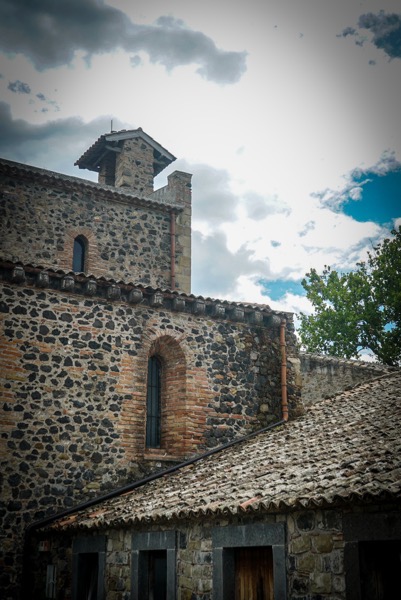This photo shows the traditional Sicilian building method with Etna’s basalt lava. You will see this everywhere on the east coast of the island. In modern buildings, the basalt is usually cut and finished to a high polish and used as trim for poured-in-place concrete structures with terracotta black inner walls. Our family’s kitchen is fitted with lovely basalt lava counters matched with traditional Sicilian tiles. The muratore (masons), literally translated as wall builders, were skilled craftsmen who could take randomly shaped rock and make beautiful, strong, structures.
Here is a small piece of interesting history about the castle.
“Prior to Italian unification, the Kingdom of the Two Sicilies, the largest of the Italian States, was comprised of the Kingdom of Sicily and the Kingdom of Naples. In 1799, King Ferdinand l, the Bourbon King of the Two Sicilies (aka King Ferdinand IV, King of Naples, aka King Ferdinand III, King of Sicily), in appreciation for the admiral’s support in suppressing a French-inspired insurrection in Naples, gave Horatio Nelson a title (Duke of Bronte) and a town (my grandmother’s hometown), or, more precisely, “the land and the same town of Bronte, the revenue stamps, the incomes of the vassals, the servitudes, the rents…” The Castle was a former monastery and, at that time, in total disrepair. Admiral Nelson never had the opportunity to live, let alone visit his property. Nevertheless, from England and with the help of estate managers (who most probably cheated him), Admiral Nelson planned the first of many renovations in the hope that he and Lady Hamilton would retire to Bronte one day and live a peaceful, quiet life away from whispers and gossip. This connection to Bronte was so strong that he had begun to sign his name, Nelson and Bronte.” – Nelson and Bronte
Find more of my photos on Instagram | Flickr | PixelFed
More from my Instagram Feed
![Basalt Lava Rock Construction, Castello Nelson, Bronte, Sicily, Italy [Photography]](http://welchwrite.com/blog/wp-content/uploads/2025/07/morning-glory-gate-1.jpg)





